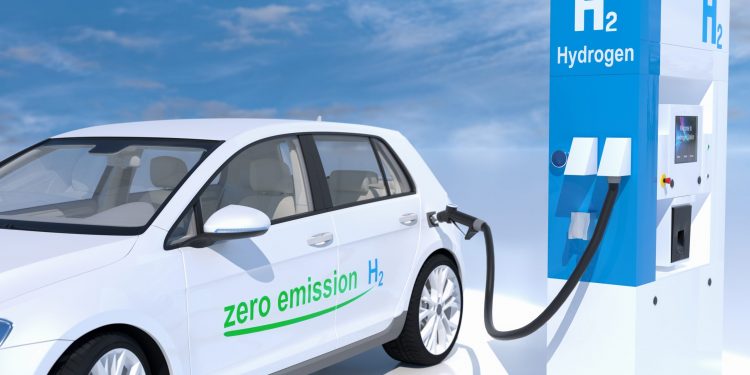Hydrogen has been hailed as a fuel for the future that could help end the world’s dependence on fossil fuels and aid the transition to net-zero emissions.
But for this hydrogen revolution to take place, some big obstacles need to be overcome.
Hydrogen is the most abundant element in the universe. It’s essential for life, the sun is mostly made of it, and it’s present in almost all living things.
But on earth, pure hydrogen is very scarce. Instead, it mainly exists combined with oxygen in the form of water.
So how does this abundant element get turned into a fuel that could help save the planet?
First, hydrogen needs to be obtained. This is done by splitting molecules. Hydrogen is an energy carrier, unlike petroleum which is a primary energy source.
To make hydrogen, it requires an input of energy. You can use methane through a process called steam reforming. Or, a source of electricity through electrolysis.
Once you have some hydrogen, you can either burn it directly or mix it with oxygen in a fuel cell, which is rather like a battery.
The reaction in the fuel cell produces electricity and heat. And the only waste; is water. One of the benefits of hydrogen, especially in hydrogen powered vehicles, the only emission that comes out of the tailpipe is pure, drinkable water, in contrast to the internal combustion engine which puts out loads of nasty chemicals and carcinogens.
This means that, as long as the energy used to produce it is sustainable, hydrogen can be a truly green fuel.
NASA started using hydrogen fuel cells to generate electricity in its space capsules in the 1960s. Today, it’s not just being considered as a rocket fuel in space, but also for planes, trains, and automobiles, as well as the industrial sector.
The most likely early applications are going to be in heavy industry for example, steel and cement making. These are heavy greenhouse-gas polluters and they consume lots of energy, a lot of coal in particular and it is very hard to replace that with electricity.
This isn’t the first time hydrogen has been hailed as a fuel of the future. So why has it never taken off?
Until renewables existed at scale, making hydrogen required vast amounts of fossil fuel, or nuclear energy, which made hydrogen both more expensive and less efficient than other ways of storing and delivering energy.
Until climate change moved up the political agenda, hydrogen simply wasn’t worth it. The existing fossil fuel infrastructure has been in place for decades.
There has also been a battle against public perception of hydrogen’s safety sparked by the Hindenburg disaster in 1937. Hydrogen gas is very flammable, and does need to be stored in a specific way.
One advantage hydrogen has over batteries is that it’s much more energy dense. This means that with a very high-pressure storage system, it takes much less space in order to make a vehicle go any distance.
If you have a hydrogen tank on board a vehicle, you can refuel quickly compared to batteries and electric cars. But then there’s the issue of cost, refueling stations and fueling infrastructure that have to be build out.
There’s also a question over how sustainable hydrogen really is. Despite some advances in the technology to generate it, it still requires energy-intensive processes that are fueled largely by fossil fuels or lots of electricity.
The only way to make truly green hydrogen is to produce it using sustainable energy. At the moment, a lot of of the hydrogen that’s used in the world, is made from natural gas, but that does produce some greenhouse-gas emissions.
Even if renewable energy is used in the electrolysis process, the energy content that comes out is less than what goes in. This leads some to argue that hydrogen is just a waste of renewable energy.
Unlike earlier waves of enthusiasm, hydrogen fuel could be here to stay this time. Technological advances are making hydrogen production more efficient and cheaper. This, along with governments commitment to decarbonize, is helping drive a new hydrogen economy.
There’s huge improvements in the vehicles or processes that use hydrogen. According to a study by McKinsey, there are more than 350 large-scale global projects under way right now. The projected total investment in the hydrogen sector amounts to an estimated US$500 billion.
We are seeing much more interest from venture capitalists, entrepreneurial activity, scientific advances, moving from the laboratories to pilot plants and ultimately getting towards a marketplace because they know a market that will pay for low-carbon approaches.
Germany has announced a 7 billion euro programme. And the China government wants to have 1 million fuel-cell powered vehicles on its road by 2030.
When we think about the tools that are needed to get to a net-zero carbon world, there’s no doubt that hydrogen will play a role.
In the short term, electrification is going to lead the decarbonization charge, but for the longer term, there is a great potential for a real hydrogen revolution that would play a big role in a decarbonized society.

















